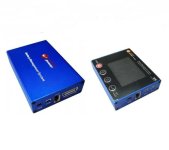yabert
100 mW
- Joined
- Apr 23, 2016
- Messages
- 42
Hi
I regularly need BMS for high amps discharge for ≈ 48V projects.
Like tractor, ATV or stationary battery with peak discharge current around 400A to 1000A.
In the past I used with great success the Zeva BMS16 (https://www.zeva.com.au/index.php?product=140) who work super well for 12S to 16S NMC or LFP cells.
After few search it seem like the Tiny BMS (https://www.energusps.com/shop/product/tiny-bms-s516-150a-750a-36) and the GWL BMS (https://shop.gwl.eu/Battery-Management/GWL-Cell-Performance-Monitor.html) could do similar work.
Questions: Is there any other simple BMS available for my applications today?
I'm looking for the simplest/cheapest BMS for my needs.
Thanks
I regularly need BMS for high amps discharge for ≈ 48V projects.
Like tractor, ATV or stationary battery with peak discharge current around 400A to 1000A.
In the past I used with great success the Zeva BMS16 (https://www.zeva.com.au/index.php?product=140) who work super well for 12S to 16S NMC or LFP cells.
After few search it seem like the Tiny BMS (https://www.energusps.com/shop/product/tiny-bms-s516-150a-750a-36) and the GWL BMS (https://shop.gwl.eu/Battery-Management/GWL-Cell-Performance-Monitor.html) could do similar work.
Questions: Is there any other simple BMS available for my applications today?
I'm looking for the simplest/cheapest BMS for my needs.
Thanks


